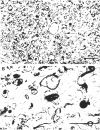Abstract
In human malarial infections, the immunological importance of modified host cell components and of parasite antigens that may be released on spontaneous rupture of infected erythrocytes in vivo is not known. It is difficult, however, to analyse antigens extracted from entire parasitized red cells because of contamination with normal red cell constituents, notably haemoglobin. To overcome this problem, a simple chromatographic procedure has been developed that concentrates antigens and radiolabelled parasite products in a separate fraction from haemoglobin. Details are also given of investigations of two different kinds of antigen associated with Plasmodium falciparum. One antigen known to be immunogenic in man is shown to be associated with membranes. The other antigen is poorly immunogenic in man and other animals and is shown to be a soluble, rather stable, acidic protein.
Full text
PDF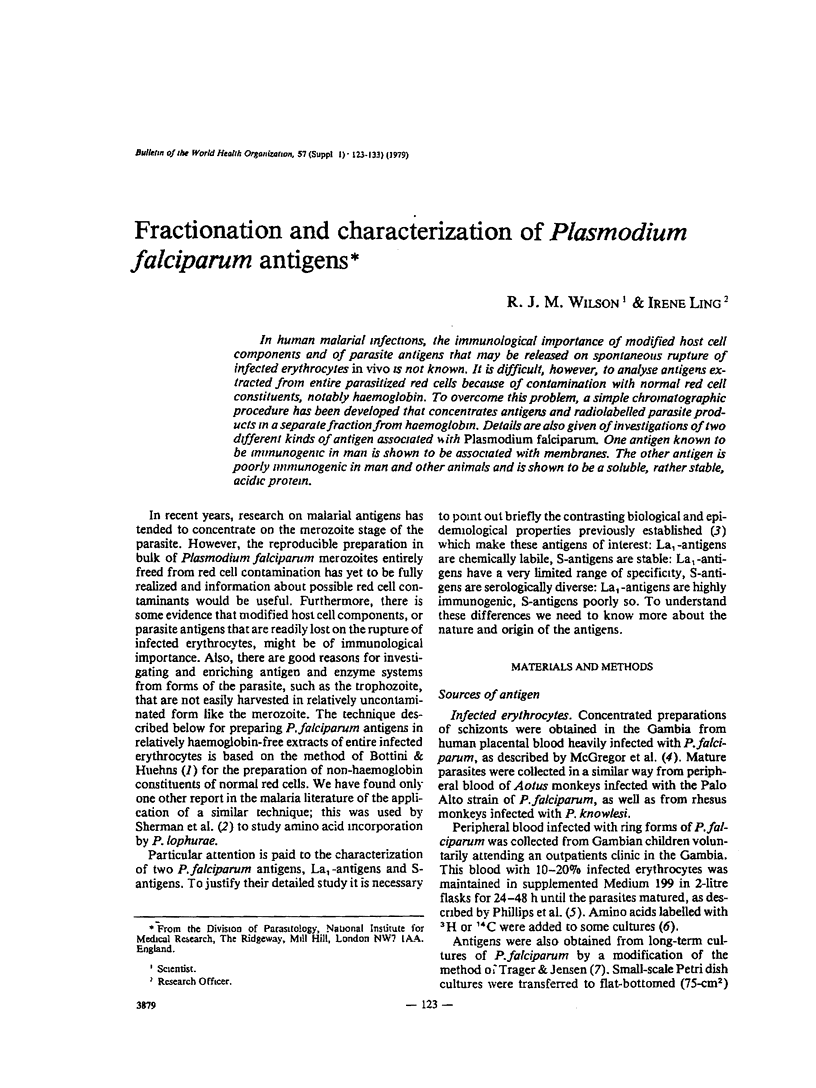
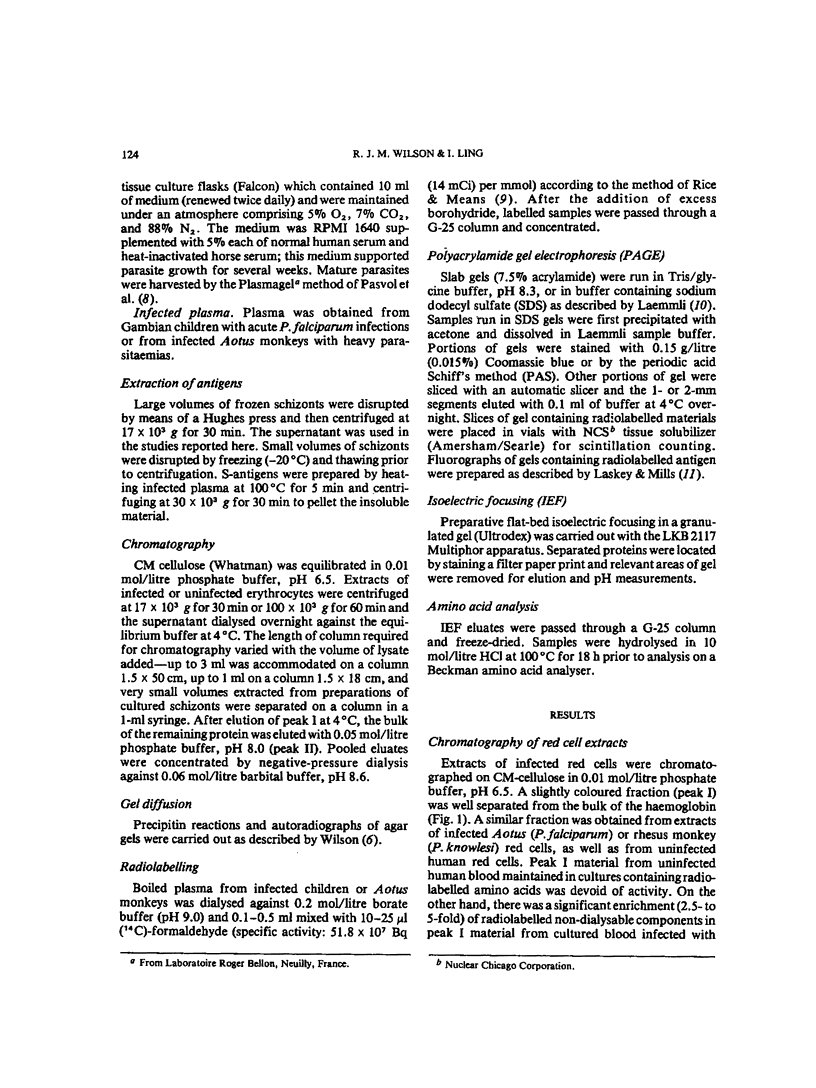
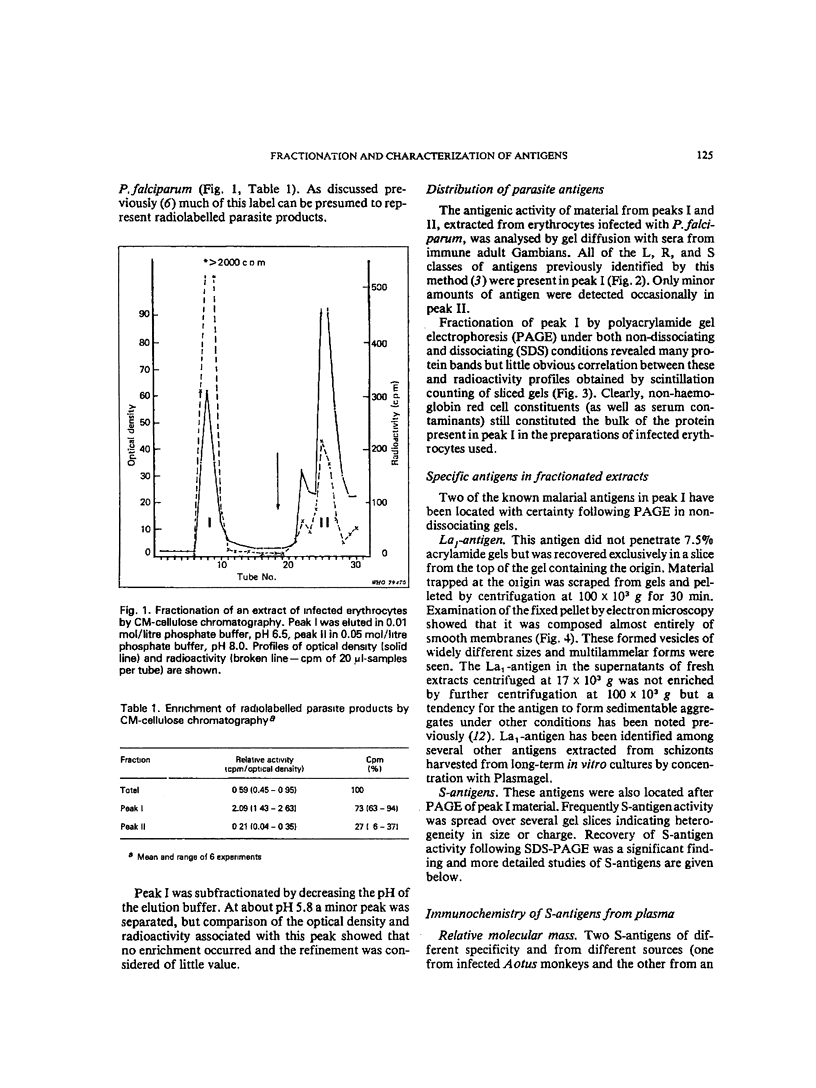
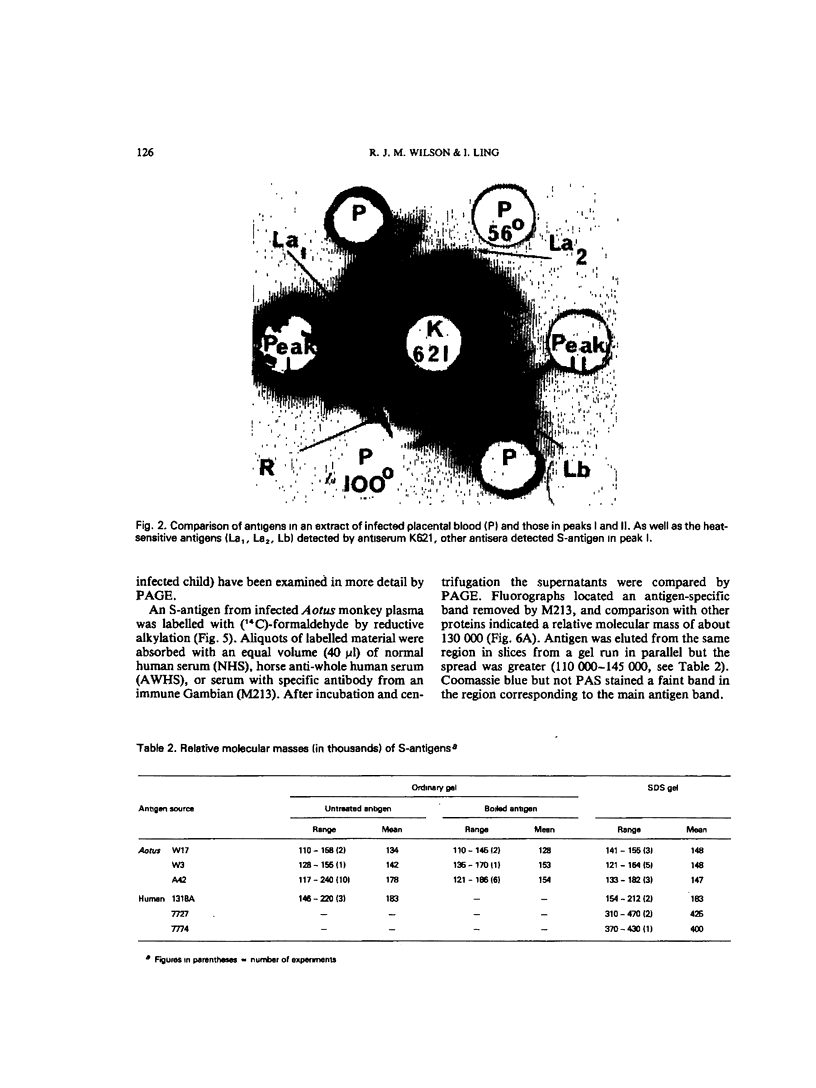
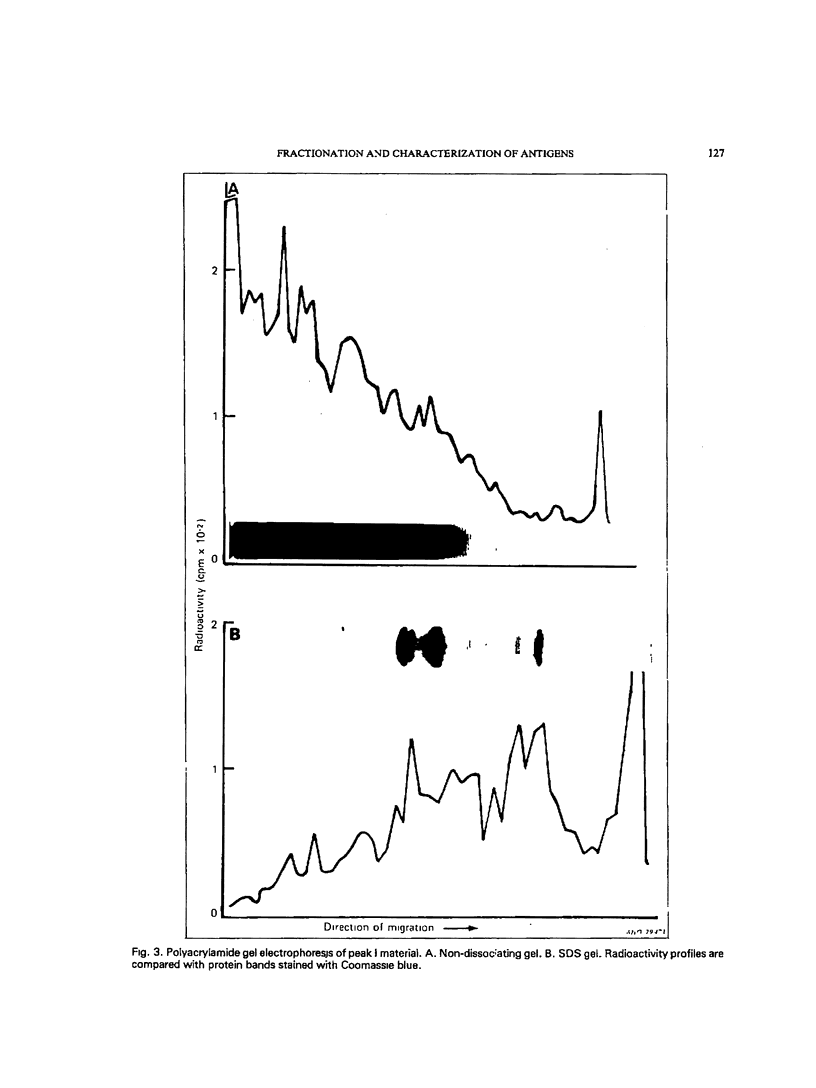
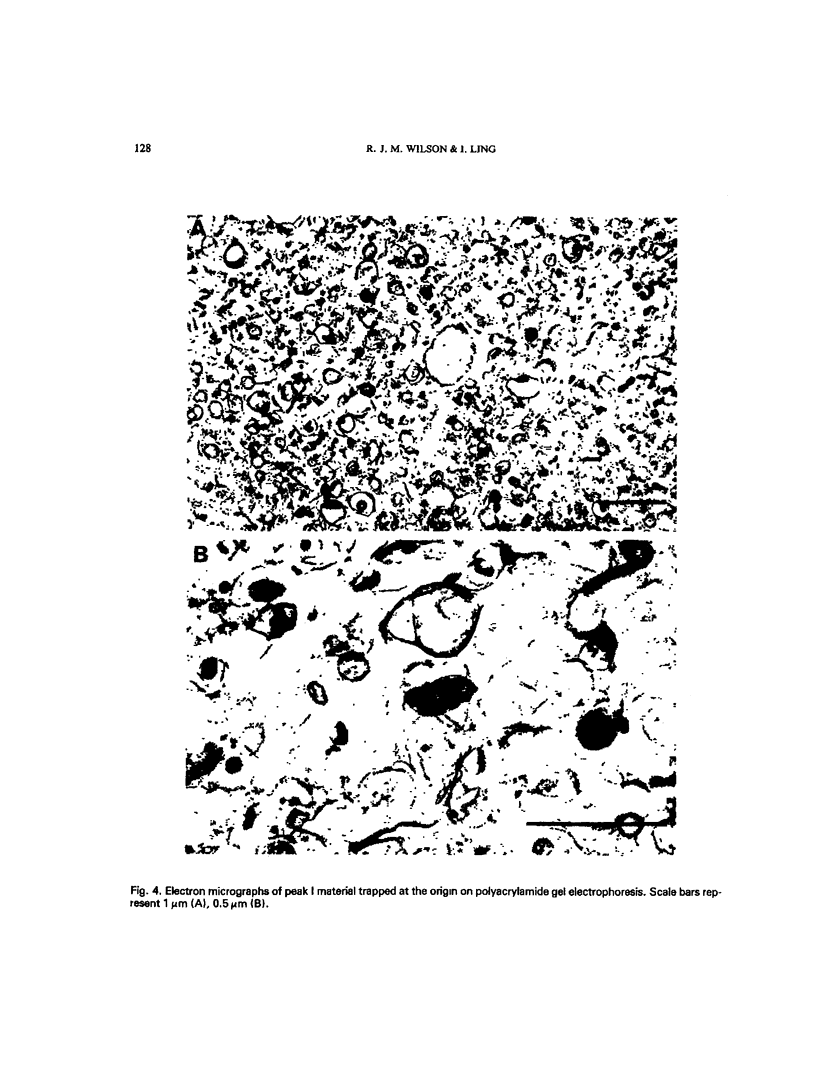
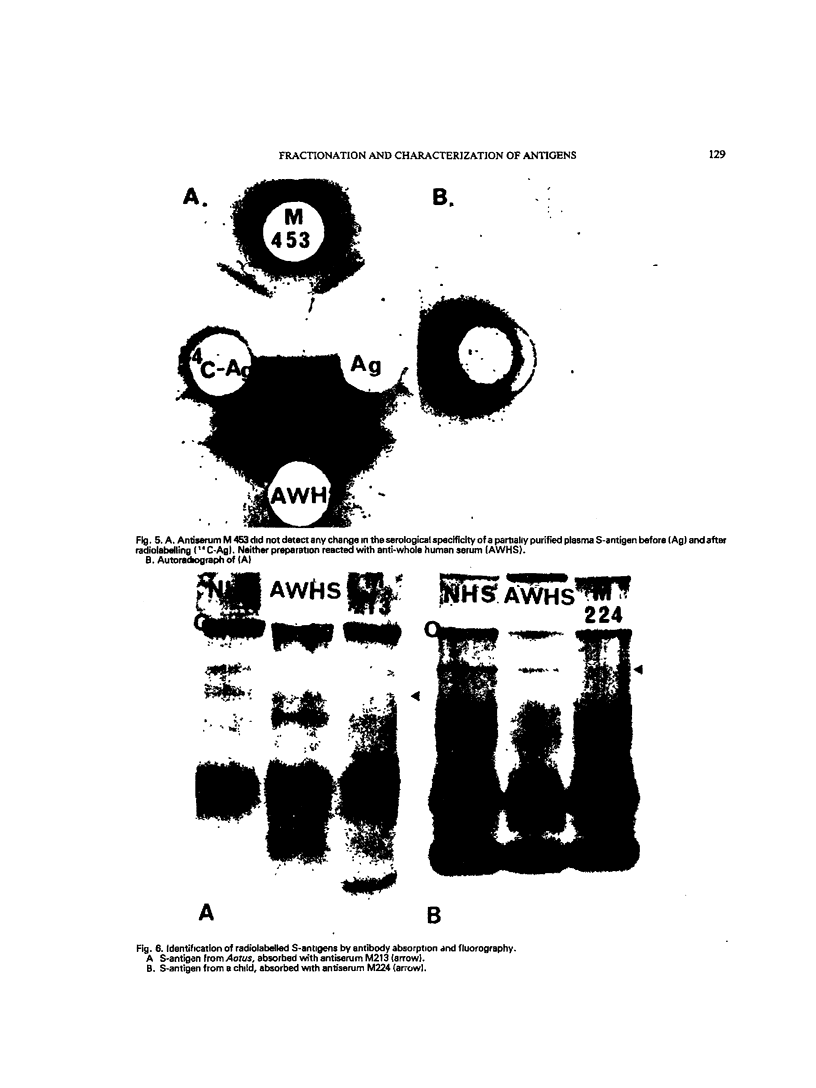
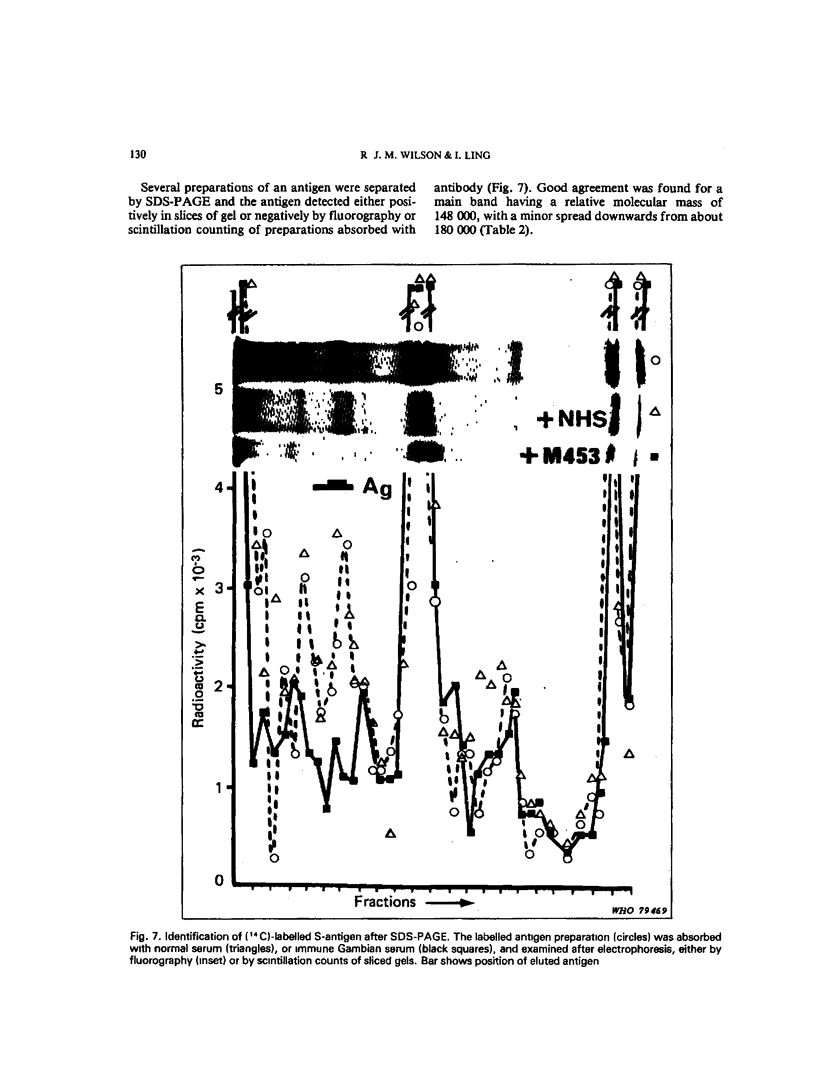
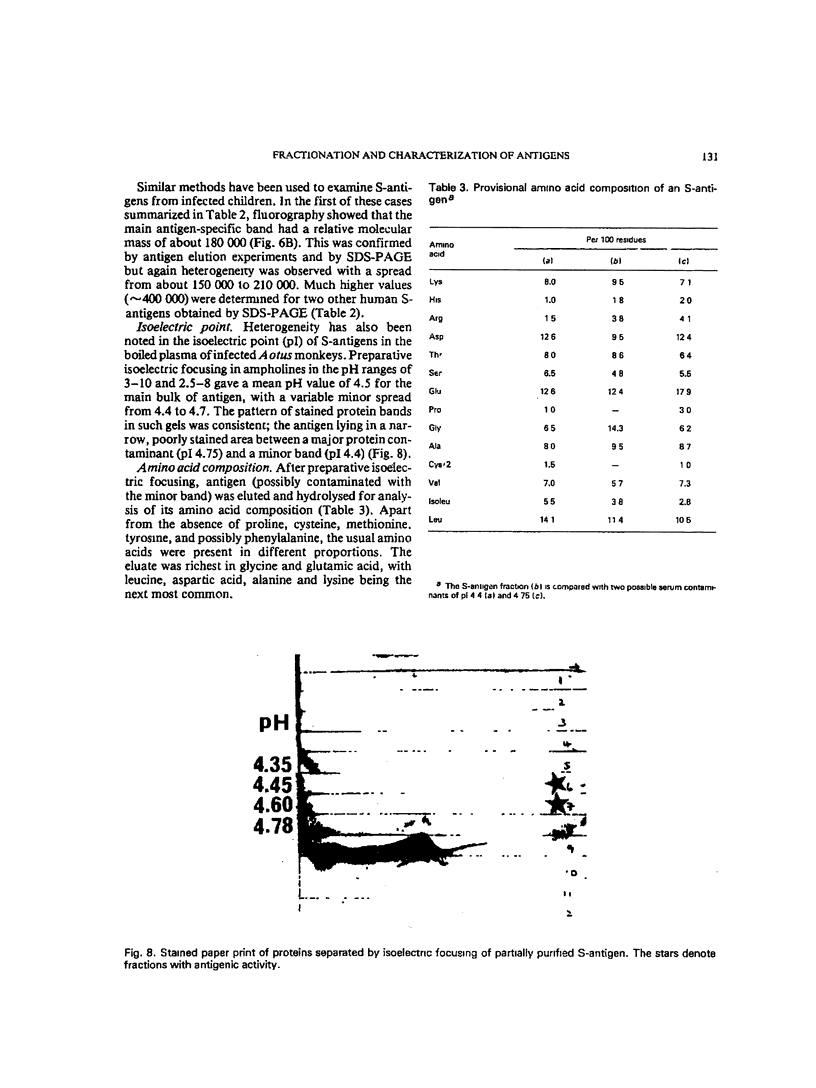
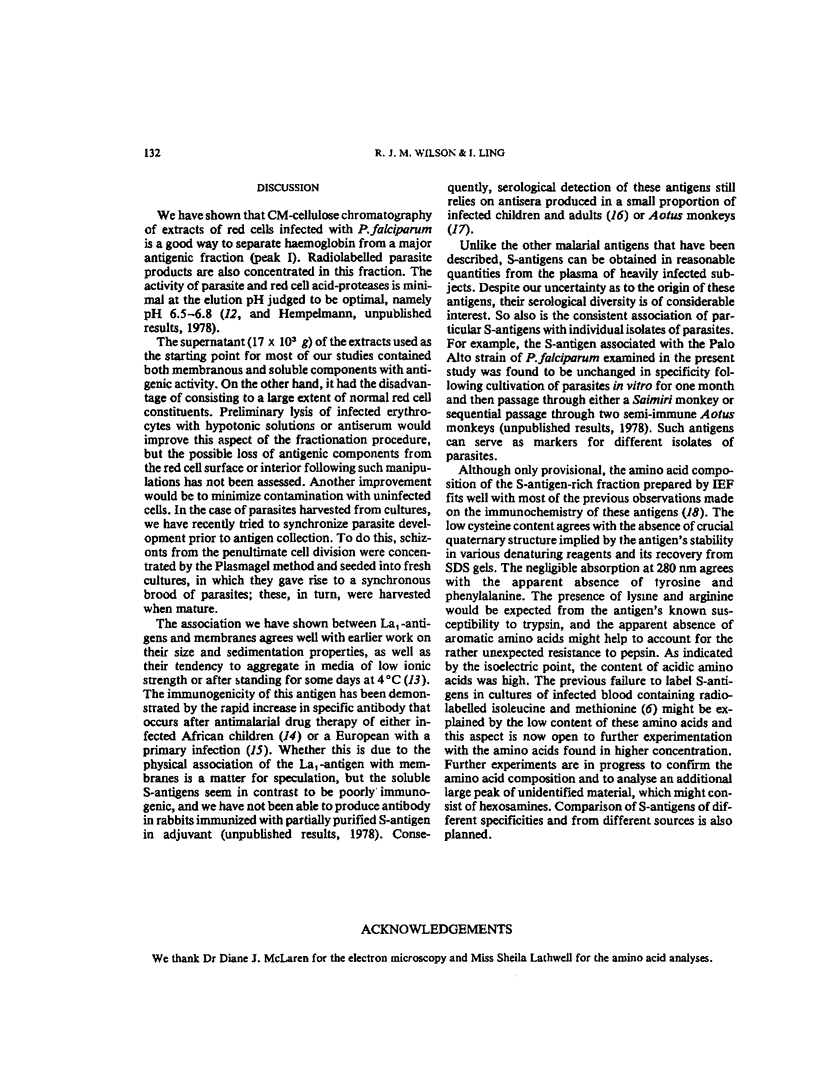
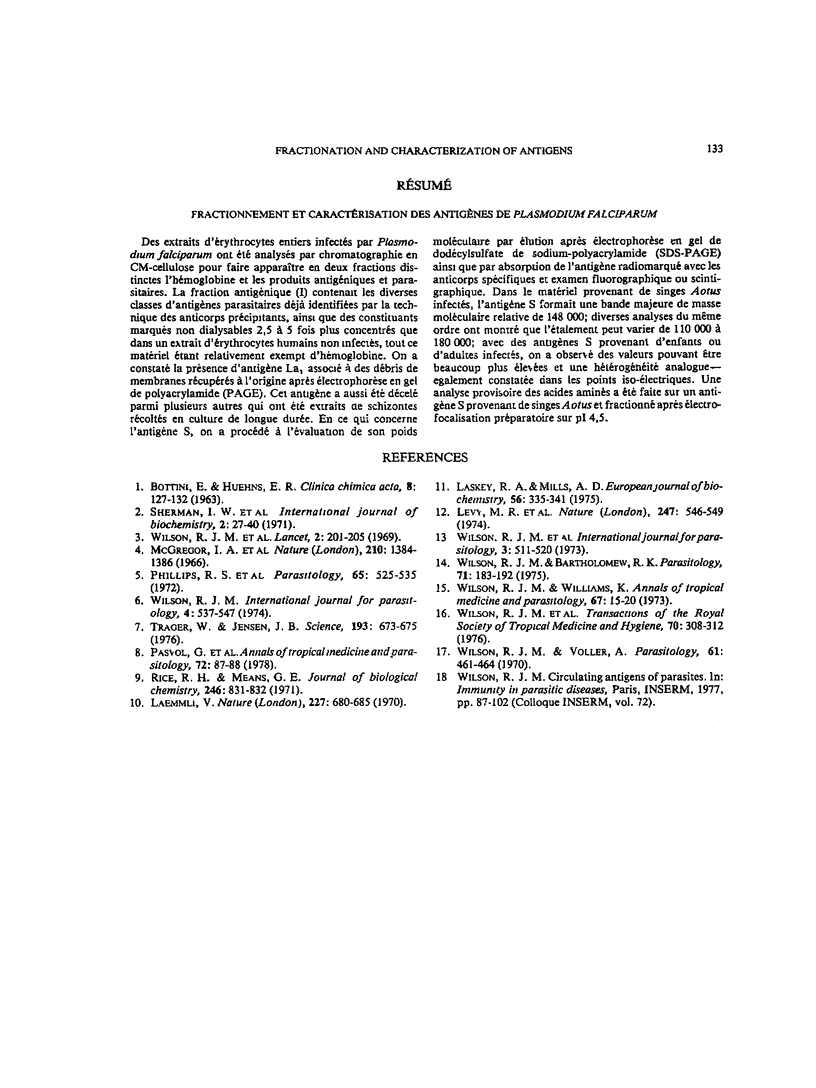
Images in this article
Selected References
These references are in PubMed. This may not be the complete list of references from this article.
- BOTTINI E., HUEHNS E. R. [Electrophoretic analysis of the non-haemoglobin proteins of human red cells]. Clin Chim Acta. 1963 Jan;8:127–132. doi: 10.1016/0009-8981(63)90207-9. [DOI] [PubMed] [Google Scholar]
- Laemmli U. K. Cleavage of structural proteins during the assembly of the head of bacteriophage T4. Nature. 1970 Aug 15;227(5259):680–685. doi: 10.1038/227680a0. [DOI] [PubMed] [Google Scholar]
- McGregor I. A., Hall P. J., Williams K., Hardy C. L. Demonstration of circulating antibodies to Plasmodium falciparum by gel-diffusion techniques. Nature. 1966 Jun 25;210(5043):1384–1386. doi: 10.1038/2101384a0. [DOI] [PubMed] [Google Scholar]
- Phillips R. S., Trigg P. I., Scott-Finnigan T. J., Bartholomew R. K. Culture of Plasmodium falciparum in vitro: a subculture technique used for demonstrating antiplasmodial activity in serum from some Gambians, resident in an endemic malarious area. Parasitology. 1972 Dec;65(3):525–535. doi: 10.1017/s0031182000044139. [DOI] [PubMed] [Google Scholar]
- Rice R. H., Means G. E. Radioactive labeling of proteins in vitro. J Biol Chem. 1971 Feb 10;246(3):831–832. [PubMed] [Google Scholar]
- Trager W., Jensen J. B. Human malaria parasites in continuous culture. Science. 1976 Aug 20;193(4254):673–675. doi: 10.1126/science.781840. [DOI] [PubMed] [Google Scholar]
- Wilson R. J., Bartholomew R. K. The release of antigens by Plasmodium falciparum. Parasitology. 1975 Oct;71(2):183–192. doi: 10.1017/s0031182000046631. [DOI] [PubMed] [Google Scholar]
- Wilson R. J., McGregor I. A., Hall P., Williams K., Bartholomew R. Antigens associated with Plasmodium falciparum infections in man. Lancet. 1969 Jul 26;2(7613):201–205. doi: 10.1016/s0140-6736(69)91437-8. [DOI] [PubMed] [Google Scholar]
- Wilson R. J., Voller A. Malarial S-antigens from man and owl monkey infected with Plasmodium falciparum. Parasitology. 1970 Dec;61(3):461–464. doi: 10.1017/s0031182000041305. [DOI] [PubMed] [Google Scholar]



